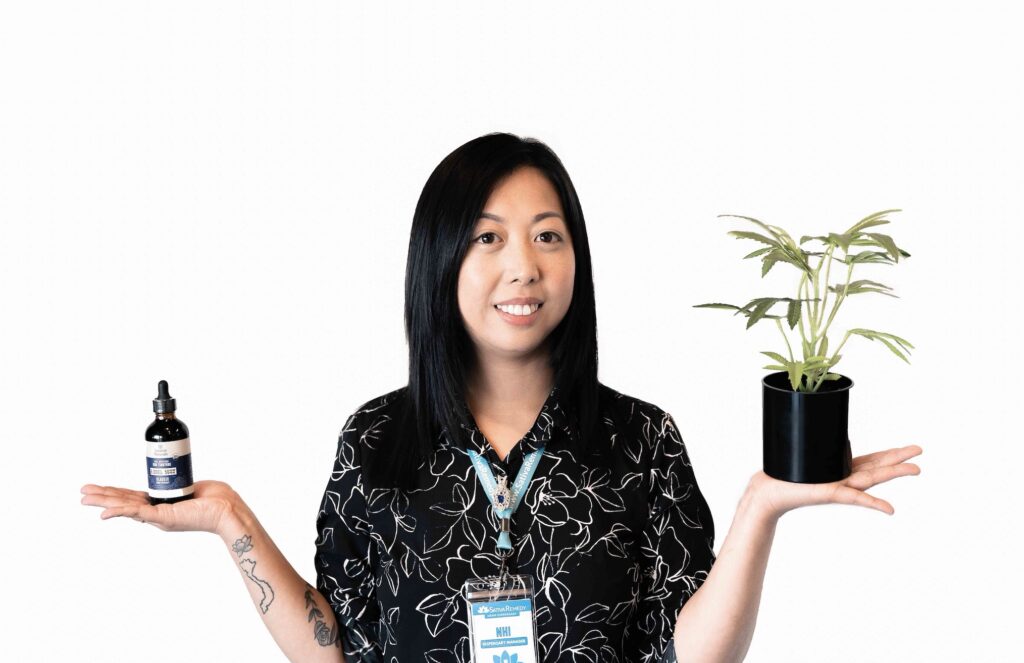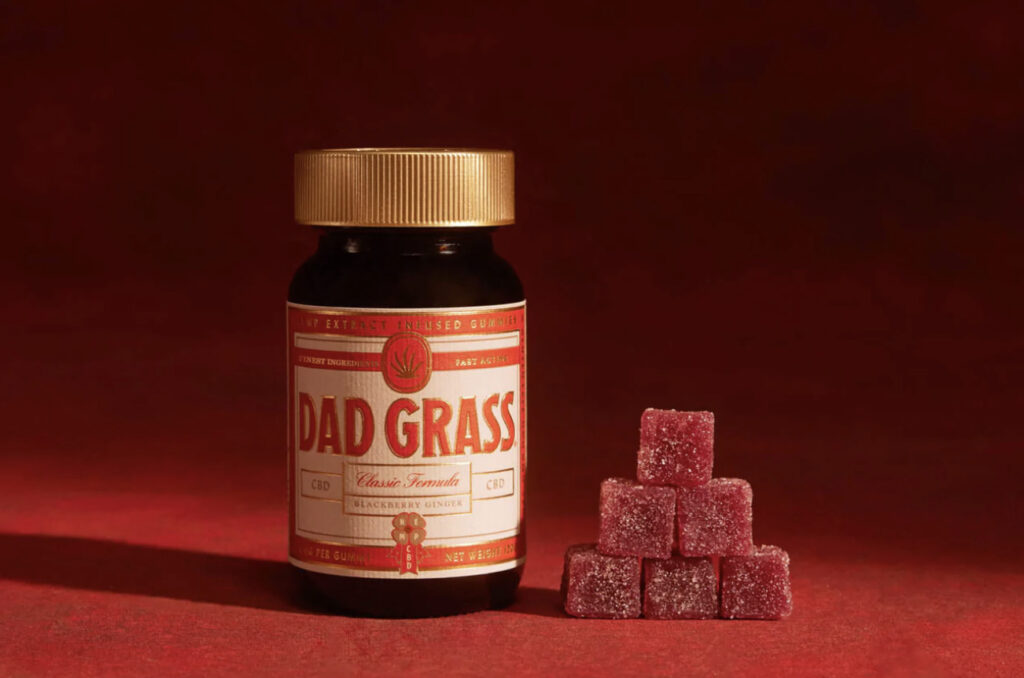
The CBD market is stabilizing after initial boom and bust
Just a few years ago, some insiders argued that the burgeoning CBD industry was on track to become a lucrative powerhouse.
However, this expectation was not fulfilled. In fact, the market has shrunk dramatically in recent years.
A handful of interrelated factors have contributed to the CBD swoop. The area under hemp has fallen sharply. The FDA — some insiders dispute — has stifled the industry by not issuing guidelines for CBD that would encourage more investment and manufacturing. The rise of Delta-8 and other psychoactive hemp-derived cannabinoids has arguably turned off potential CBD users, offering an experience closer to conventional cannabis.
But while CBD may be bottomed, experts and business owners alike confirm it’s far from the end. Insiders point to several reasons for hope: a stabilizing market, an increase in consumer education, the disappearance of underperforming products, and a chance for Congress to rectify the situation.
Read on to learn more about the challenges CBD is facing, what products continue to sell, and the opportunities ahead.
After a big start, a big slump

Before we dive into the state of the CBD market, let’s revisit how we got here.
Hemp prohibition began to thaw during the Obama administration with the passage of a Farm Bill in 2014. The legislation allowed states to start pilot programs for hemp cultivation.
The CBD floodgates opened fully a few years later when then-President Donald Trump enacted the 2018 Farm Bill. This law legalized the cultivation and manufacture of hemp products throughout the United States, as long as they contain less than 0.3% THC.
“The acreage just started to grow from 2014 to 2019. And when we got to 2019, we had registered about 550,000 acres [of hemp]veteran hemp entrepreneur Morris Beegle told Leafly. Beegle is co-founder and president of the We Are For Better Alternatives (WAFBA) family of brands, which includes the annual NoCo Hemp Expo.
Manufacturers could extract CBD from this raw hemp and infuse it into consumer products like gummies, tinctures, infused beverages, and others. (Raw hemp can also be used as a biofuel, building material, and clothing material, among other things.) Customers also saw a range of new CBD products: toothpicks, pillows, and cycling shorts, to name a few.
But the increase in hemp production created an imbalance between supply and demand.
“It was simply too much material for the market and the demands of the market. All of a sudden we’re overwhelmed with the extraction and we can process it, and suddenly everyone has CBD isolate, they have distillate, they have biomass and the price is basically a crater,” Beegle explained.
Shop highly rated pharmacies in your area
Shows you pharmacies near Boulder, CO
Show all pharmacies
He added that the price of CBD isolate has lost almost all of its value in recent years. “Once it was $18,000 for a kilo. Now it’s only $200.”
Product prices also collapsed. According to Brightfield, a cannabis analytics company, CBD product prices have fallen by 40-50% in 2019 and 2020.
Many companies could not keep their heads above water. “We had 4,000 or 4,500 brands in 2020 and I heard last year it was around 1,500 brands. And then there’s going to be a lot more herd thinning,” Beegle added.
Beegle believes hemp acreage has also bottomed recently, standing at around 20,000 acres.
Related
Hemp is finally legal. Let’s see if it can save the world
Bad products and Delta-8 impact the CBD game
Marcus Quinn, CEO of SunMed CBD / Your CBD Store, explained that in the years following the passage of the 2018 Farm Bill, there has been an increase in poor quality products, which may have put potential customers off CBD.
“There were so many people, so many companies [and a lot of] below average products. These got into people’s hands and then these people became disenchanted with them [using CBD]’ Quinn said to Leafly.
The 2018 Farm Bill also made it legal for manufacturers to convert hemp into a range of novel psychoactive cannabinoids such as delta-8, hemp-derived delta-9 THC, HHC, and more. These products offer a psychoactive experience more akin to THC, potentially attracting customers who would otherwise have purchased CBD products.
Delta-8 “definitely pulled off a lot of CBD sales,” said Nhi Kha, who runs a cannabis dispensary called Sativa Remedy outside of Buffalo, New York. She estimates that psychoactive products — which her store is limited to hemp-derived delta-9-THC — account for half of her sales.
Quinn estimates that these psychoactive cannabinoids also make up a large portion of its sales — around 30%.

Is the FDA also responsible for the weak market?
The Food and Drug Administration (FDA) has also played a role in choking the CBD market, according to Beegle and other industry insiders.
Following the passage of the 2018 Farm Bill, then-FDA Commissioner Scott Gottlieb announced that his agency would “clarify its regulatory powers over these products.” The agency began researching CBD to create a regulatory framework.
This January, four years later, the agency announced it would refer the mandate to Congress.
“The FDA hasn’t done what Congress told them to do through the Farm Bill, which was to regulate CBD as a dietary supplement,” Beegle told Leafly.
Beegle argues that the lack of regulatory clarity has had a huge impact on potential investors.
“You have big retailers like Whole Foods, Krogers, Safeway, Walgreens to say something else [they’re] I’m going to introduce ingestible CBD products because the FDA hasn’t regulated it,” he said.
“Coca-Cola and Pepsi and Nestle, all the big food and beverage brands and even big diet supplement brands have mostly stayed on the sidelines. Investment money is like, ‘We tried to invest money because we thought they would regulate it,'” he added.
However, some insiders have more faith in Congress than the FDA to get the job done.
“We support the FDA’s decision to submit it to Congress. We believe that legislation will give us a better chance of finding a clearer path than that [FDA]said Marcus Quinn of Your CBD Store.
Related
Big decision: FDA won’t restrict CBD sales, calls for ‘new regulatory path’ to ensure safety
The market has started to stabilize
Despite bleak data points and a fragile regulatory situation, many argue that the CBD market has started growing again.
Back in 2018, analytics firm Brightfield estimated that the hemp CBD industry would be worth $22 billion by 2022. In a 2023 report, Beegle estimates that the industry is currently worth between five and six billion.
“I think we’ve bottomed out and I think the CBD market has stabilized,” he said.
“Our company has seen a similar pattern,” added Quinn. “It seems that awareness has increased and our customer loyalty is growing. I think we will definitely get back to 2019 levels.”
Kha of cannabis dispensary Sativa Remedy also believes the industry has started to stabilize and that the legalization of recreational cannabis in New York has actually brought more consumers back to CBD.
“A lot of my customers say, ‘That weed out there isn’t like the weed I smoked back then,'” Kha told Leafly in a phone interview, while her shop’s door chimed in the background every few minutes. “I’ve seen increased sales of my CBD flowers because more people are using it, perhaps to mix it with their higher THC. recognize more people [that they] can use a lot of CBD during the day to function.”
Goodbye new CBD products!
Not all form factors have evolved equally as the market has rallied. Both Quinn and Kha said gummies are flying off their shelves. Kha noted that drinks are a close second. Quinn said his best-selling product is a topical for pain relief, and that tinctures used to be more popular.
Ben Starmer is the co-founder of the lively — and Leafly recommended — CBD brand Dad Grass, which sells a range of CBD products including pre-rolls, gummies, and tinctures. He has noticed an increasing interest in CBD flowers from customers.
“For us, the biggest change would be the increased awareness of smokeable CBD as a new way of consuming cannabis/CBD,” he said. “When we started, so much of what we did was education… Now the term ‘CBD joints’ is much more widely known, which was a pleasure to see,” added Starmer.
None of the business owners I spoke to for this story shed tears over the disappearance of new products from the market.
“Looking back on 2019, CBD has been widely positioned as a panacea for pretty much everything,” Starmer said. “So overall we saw bad expressions of CBD in everything from gas station gummies to shampoo to candles.”

“Consumers couldn’t differentiate between high-quality products with adequate amounts of active ingredients in the right format… and something that might not even contain CBD. Luckily, most of these products fell by the wayside,” he explained.
“Consumers are getting smarter,” added Kha. “It’s been five years since CBD has been on the market and I think consumers are more conscious about their purchases now,” she said.
Related
Does CBD reduce the effects of THC? Recent studies question a common belief
What’s next for CBD?
The CBD industry could get another jolt later this year from a revised Farm Bill. The bill expires every five years — and therefore needs to be updated — and the 2023 bill could potentially include a broader regulatory framework for CBD that will help the industry grow.
On the one hand, Beegle believes that the industry will continue to recover. The only question is whether this growth will be gradual or drastic.
“If [the industry] As it is now, where we really don’t have any regulations and it’s just gray, I think we’re going to slowly increase. But when the FDA or Congress initiates a regulatory process and everyone says, “Okay, now we know the rules and let’s play within the rules,” then you’ll see things increase by 10 or 12 or 15 percent a year for one specified period of time.”

Post a comment: